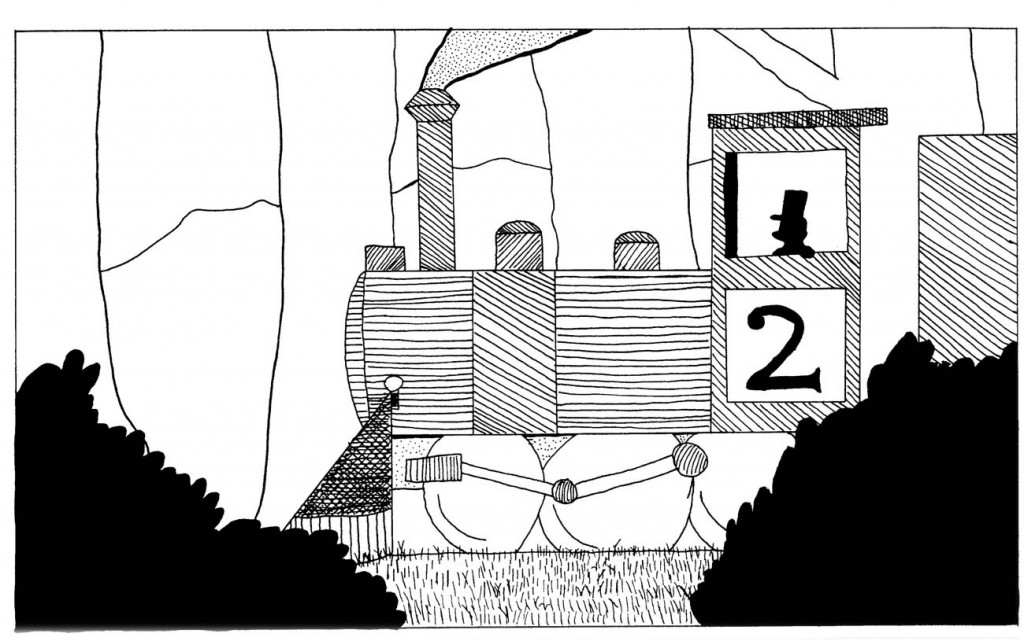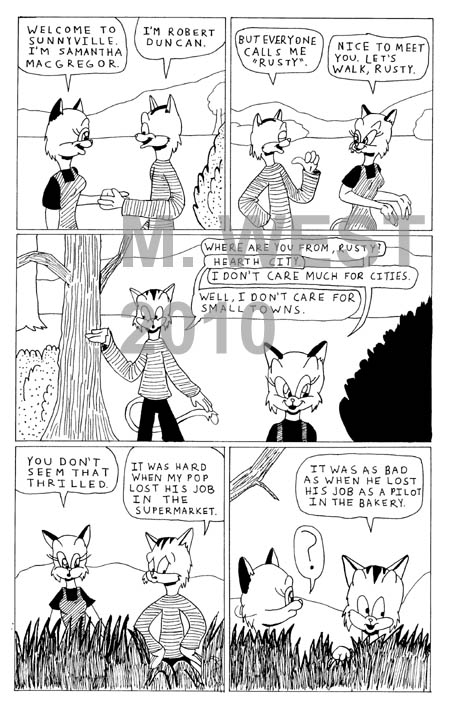When it comes to working on my comics, I tend to rely on my imagination. There’s nothing wrong with doing this. Some out there like Jerry Moriarty like to work entirely from there imagination. Others though may use live models and/or photo reference. Noted illustrator James Gurney, creator of Dinotopia, uses both photos and live models frequently. In fact, in a recent blog post of his, Gurney reviews some of his methods of working. He does indeed use photos. In fact, I’d like to expand some more on that.
 This image that you see here is from the first episode, second page of Sunnyville Stories. This locomotive was sketched from photo reference. I just made a search on the web and through books of steam locomotives and made sketches from those images to come up with this. Photos can be a handy tool. At the same time though, professional artists like Gurney acknowledge that they can be a crutch or even a problem. Gurney discusses this more in detail in his book, Imaginative Realism: How to Paint What Doesn’t Exist and mentions it too in a neat article in the recent June 2011 issue of ImagineFX magazine. (On another note, that magazine is really cool. I have a subscription to it and it is REALLY imformative. Go buy a copy from your local newsstand today!)
This image that you see here is from the first episode, second page of Sunnyville Stories. This locomotive was sketched from photo reference. I just made a search on the web and through books of steam locomotives and made sketches from those images to come up with this. Photos can be a handy tool. At the same time though, professional artists like Gurney acknowledge that they can be a crutch or even a problem. Gurney discusses this more in detail in his book, Imaginative Realism: How to Paint What Doesn’t Exist and mentions it too in a neat article in the recent June 2011 issue of ImagineFX magazine. (On another note, that magazine is really cool. I have a subscription to it and it is REALLY imformative. Go buy a copy from your local newsstand today!)
The problem with photos is that copying them too closely can lead to problems. Copying a person from a photograph, especially if they are in an action pose, can make the final work look stiff, rigid and outright unnatural. If you don’t own the photo (i.e. you just grabbed it off Flickr or Google Images), there can be ethical issues as well.
Relying too much on photos can lead to being photodependent, a term Gurney coined for those who rely on photos too much.
So what can you do for your comics? How do you avoid problems with being photodependent?
Use a lot of photos. Don’t rely on one person, one angle, one landscape, etc.
A good tip from Gurney himself: Switch the photo over to black and white so that you won’t be influenced by the color. (Buy his book, Imaginative Realism, while you’re at it. And no, he’s NOT paying me to say that. It’s a very handy book.)
Rather than copy straight from the photograph, do what I do. Make sketches from the photos you get and feel free to alter the subject matter. It’ll make the final work look more organic.
 A lot of the wilderness you see in my comics series is a mixture of my imagination, sketches done in my studio, plein air sketching (sketching done on location outdoors), and from photo reference. This gives a final piece that is probably fifty percent imagination, twenty-five percent photo reference, and twenty-five percent organic.
A lot of the wilderness you see in my comics series is a mixture of my imagination, sketches done in my studio, plein air sketching (sketching done on location outdoors), and from photo reference. This gives a final piece that is probably fifty percent imagination, twenty-five percent photo reference, and twenty-five percent organic.
To come up with those woodland backgrounds, I made many trips out into the wilderness. My main visits were to Alley Pond Park in Queens, NY and Fort Tryon Park in Manhattan. While there, I snapped photos with my Nikon Coolpix S202 camera. I had also taken a newsprint pad with me and scribbled down some of the weird branches and tree shapes I saw. Not all trees grow straight up.
It was from those that I started to come up with sketches and concept art. The photos were handy, but it was important to employ my imagination as well.
In conclusion, use photos wisely for your comics. DON’T let your photos use you.
What do you think? Any of you draw comics using reference materials like photos or live models? How do you put together your final images (models, photos, imagination, etc)?


